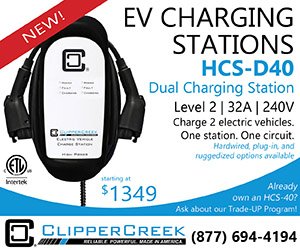SAE International’s Wireless Power Transfer and Alignment Task Force is urging the US Federal Communications Commission (FCC) to act to support the commercialization of wireless charging operating in the frequency band of 79 kHz to 90 kHz.
The SAE task force consists of more than 150 international experts representing automakers, suppliers, users, national laboratories and government agencies.
In a letter sent to FCC Secretary Marlene Dortch, Task Force Chair Jesse Schneider recommends that the Commission adopt a radiated emission limit of 82.8 dBμA/m from 79 kHz to 90 kHz (SAE J2954 Radiated EMI Limit Proposal). The task force also urges the Commission to support the testing methodologies specified in the ANSI C63.30 standard.
The letter reads, in part: “Should the Commission act on its proposal to adopt new internal electric field limits between 3 kHz and 10 MHz, the task force further requests that the Commission update KDB 680106 to indicate that magnetic field reference level measurements at or below 27 μT, in accordance with ICNIRP 2010, are sufficient to show compliance in the frequency range of 79 kHz to 90 kHz. Finally, the SAE J2954 task force requests that the FCC allows ‘Type’ accreditation for WPT-EV Ground Assembly systems.”
Wireless Power Transfer for Electric Vehicles (WPT-EV) is an automated and touchless charging method that transfers power across an air gap from a Ground Assembly (GA) to a Vehicle Assembly (VA) and then rectifies that power into DC voltage to charge the vehicle batteries. WPT-EV systems operate at similar efficiencies to plug-in charging—tests have shown grid-to-battery efficiency that often exceeds 90%.
The letter continues: “The wireless power transfer portion of a system includes only local energy transfer, with no communication occurring at the resonant power transfer frequency. The frequency range of operation, 79 kHz to 90 kHz, was carefully selected by several Standard Development Organizations including SAE J2954, ISO 19363, IEC 61980, and the Chinese GB/T 38775.4 standards for its low probability for electromagnetic interference to other radio services (EMC) as well as its ease of verifying dosimetry levels to be compared against international requirements for exposure to non-ionizing radiation to humans (EMF) and Cardiac Implantable Electronic Devices (CIED). Communication for WPT-EV system operation occurs over wireless LAN and is undisturbed by the power transfer process.”
The SAE J2954-2 team is also working on the standardization of wireless charging for heavy-duty vehicles, and will produce a guideline a year from now.
Source: Green Car Congress
